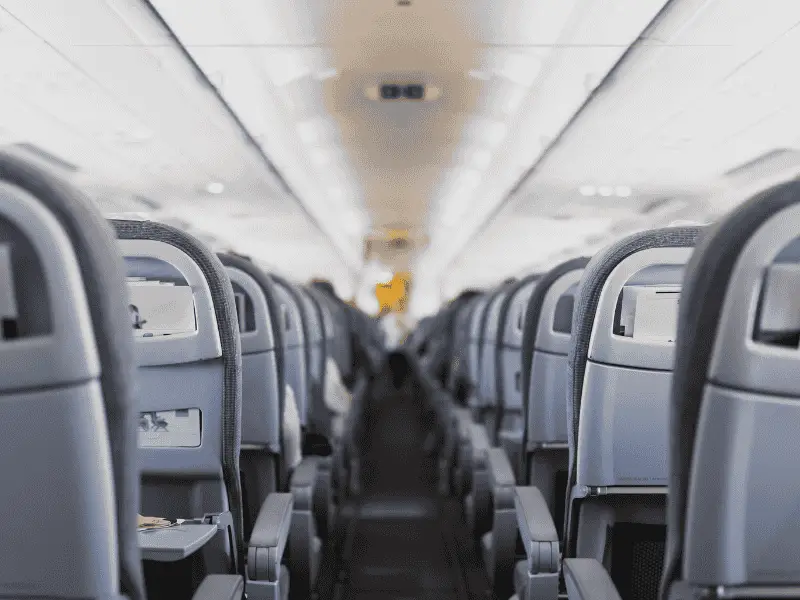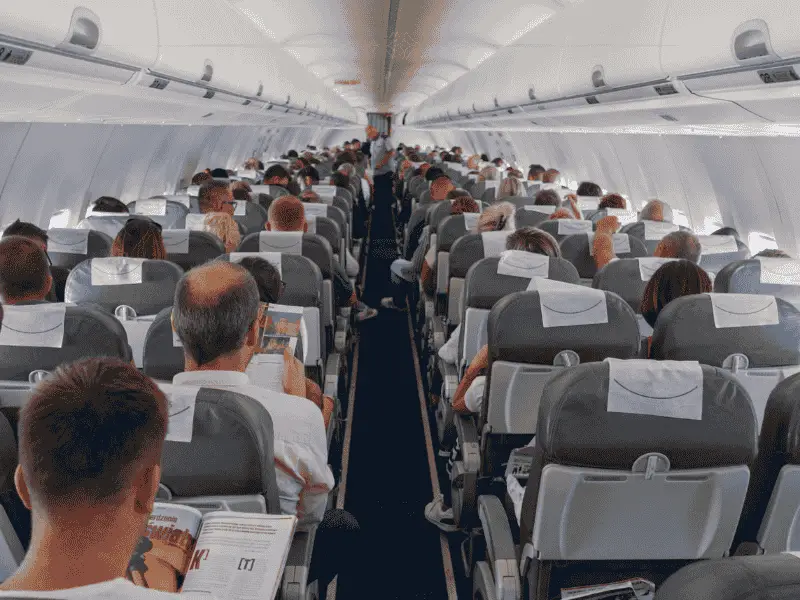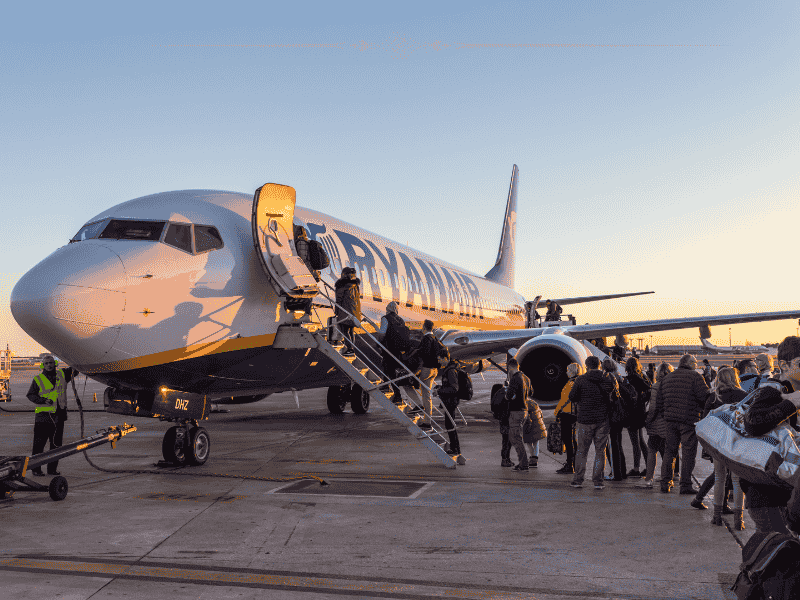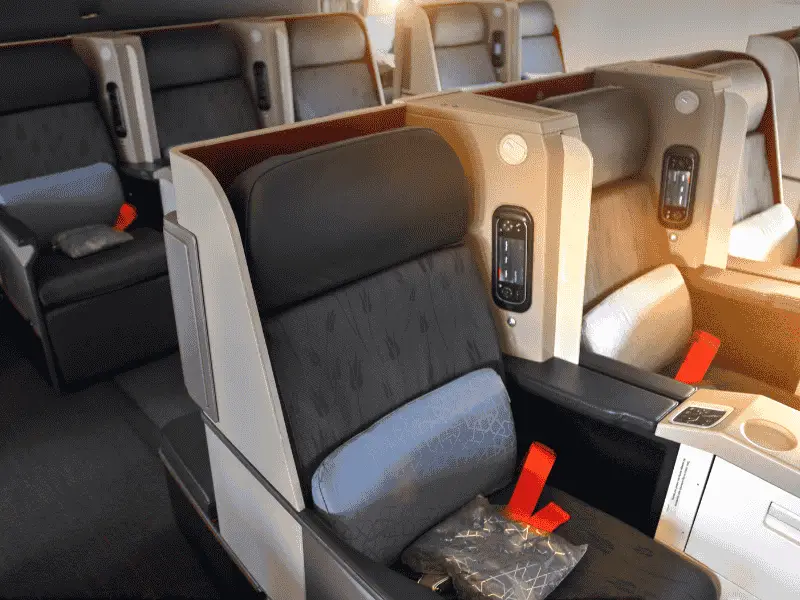Air travel has always had its share of unwritten rules and passenger faux pas, but a new phenomenon is causing frustration in aircraft cabins worldwide. The term ‘aisle lice’ has emerged to describe passengers who leap from their seats the moment the plane touches down, creating chaotic queues in the aisles before the aircraft has even reached its gate.

The aviation industry has witnessed a significant uptick in impatient passenger behavior during the deplaning process. These eager travelers, dubbed ‘aisle lice,’ are characterized by their rush to stand up and crowd the aisles immediately after landing, often while the aircraft is still taxiing to its final position.
This behavior typically unfolds in a predictable pattern: As soon as the wheels touch the runway, these passengers begin unfastening their seatbelts, despite illuminated safety signs. They then proceed to retrieve their belongings from overhead compartments and position themselves in the aisle, creating a human traffic jam that extends from front to back.
Psychology experts suggest several factors contributing to this behavior. The phenomenon partly stems from the psychological impact of being confined in a small space for extended periods. After hours of restricted movement, passengers often experience an urgent need to regain control over their mobility.
Additionally, the competitive aspect of modern air travel plays a crucial role. With increasingly crowded airports and lengthy immigration queues at international destinations, some passengers believe that gaining a few minutes during deplaning could significantly reduce their overall transit time.
The consequences of ‘aisle lice’ behavior extend beyond mere inconvenience. Flight attendants report increased incidents of personal item collisions as passengers hastily retrieve their luggage. Furthermore, the crowded aisles can pose safety risks, particularly during unexpected turbulence during taxiing.
The phenomenon also affects the boarding process for the next flight, as ground crew members need additional time to reorganize the cabin when passengers disembark in a disorderly fashion. This can contribute to delays in the airline’s schedule, creating a ripple effect throughout the day’s operations.
Airlines have begun acknowledging this growing issue, though their approaches vary. Some carriers have implemented structured deplaning procedures, similar to the boarding process, where passengers are called to exit by row numbers. Others have focused on passenger education, incorporating messages about proper deplaning etiquette into their pre-landing announcements.
Flight attendants are also being trained to manage these situations more effectively, using techniques that balance maintaining order with ensuring passenger satisfaction. However, enforcement remains challenging, as airlines must weigh the benefits of strict rule implementation against potential customer dissatisfaction.
Interestingly, the ‘aisle lice’ phenomenon varies significantly across different regions and cultures. In some Asian countries, orderly deplaning is deeply ingrained in the cultural norm, with passengers typically remaining seated until their row is clear to exit. Conversely, in other regions, the rush to exit has become almost expected behavior.
These cultural differences highlight how social norms and collective behavior patterns influence air travel etiquette. Airlines operating international routes must navigate these varying expectations while maintaining consistent service standards.
The emergence of ‘aisle lice’ is part of a broader pattern of evolving passenger behaviors in modern air travel. This trend coincides with other notable phenomena in the aviation industry, such as passengers attempting to circumvent boarding procedures or engaging in seat selection strategies.
These behaviors often stem from the same root causes: increasing air travel stress, tighter connections, and the general anxiety associated with modern flying. Understanding these connections helps provide context for why passengers might exhibit such behaviors.
Aviation experts suggest several approaches to address this issue effectively. First, airlines could implement more efficient deplaning systems, such as using multiple exits when possible or providing clearer instructions about the process. Some suggest that improved communication about connection times and gate information could help reduce passenger anxiety about missing flights.
For passengers wishing to avoid contributing to this problem, the key is preparation and patience. Having all necessary items easily accessible and remaining seated until the rows ahead begin to move can help maintain an orderly deplaning process.
Airport design and infrastructure play a significant role in this behavior. Modern airports with efficient baggage handling systems and well-designed immigration areas tend to experience fewer issues with rushing passengers. When travelers are confident in the airport’s efficiency, they’re less likely to feel pressured to race off the aircraft.
Some airports have introduced digital systems that provide real-time updates about baggage claim and connection gates, helping to alleviate passenger anxiety and reduce the urgency to exit quickly.
While the ‘aisle lice’ phenomenon might seem like a minor inconvenience, its cumulative effect on the travel experience is significant. It can create unnecessary stress for both passengers and crew members, potentially affecting the overall perception of air travel comfort and efficiency.
For airlines, finding the balance between maintaining orderly procedures and accommodating passenger behavior remains an ongoing challenge. The key lies in understanding passenger motivations while implementing systems that promote more efficient and comfortable travel for everyone involved.
The ‘aisle lice’ phenomenon represents more than just impatient behavior; it’s a reflection of broader changes in air travel culture and passenger expectations. As the aviation industry continues to evolve, finding effective solutions to this and similar challenges will be crucial for maintaining a positive travel experience for all passengers.




